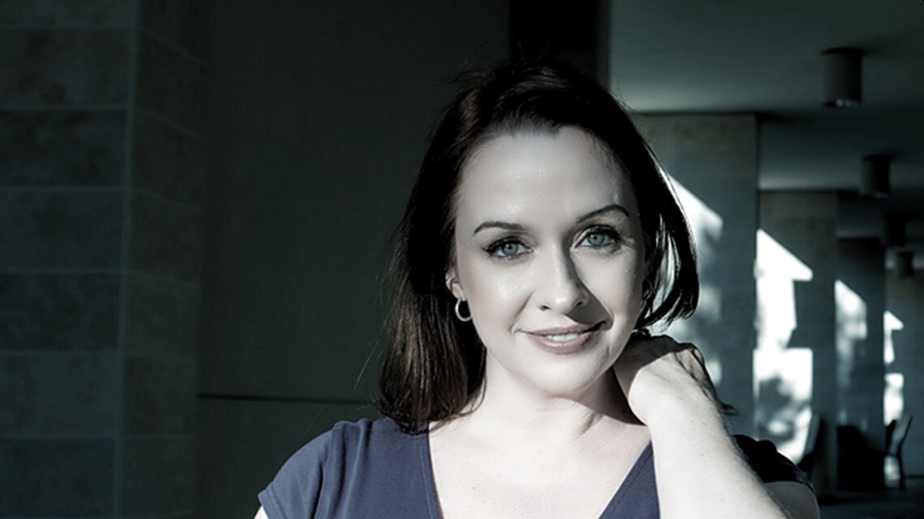How to Perfect Your Investor Pitch Deck: Expert Tips by Donna Griffit

A pitch deck is how you make connections with the people who can take your startup where you want it to go. It’s only the first step but there won’t be any more unless you impress investors enough.
Doing it right could be the difference between success and failure even if the underlying fundamentals are the same. 99% of pitches fail to get funding so if you’re looking for investors, you should try everything in your power to make the best first impression possible.
Donna Griffit is an expert in transforming the quality of a pitch. She’s seen over 50 pitch decks a week for 17 years and has observed every mistake possible. Allyson Kapin, Director of Women Who Tech, sings her praises, “Donna is ‘the best’ startup fundraising pitch coach I’ve worked with.”
For Donna, it all comes down to the importance of the overall story. She teaches the winning structure which allows investors to connect with the company and the founders. As she says, “stories inspire, captivate, resonate and influence!”. Let’s take a look at the basic steps in the structure according to Donna, and how they should be applied to your pitch deck.
The Need
A startup can’t be based on originality or cool tech if nobody actually wants it. Donna Griffit knows your product needs to solve a real problem that potential customers would pay to fix. She thinks the best way to set the scene is through anecdotes of someone from your target market. They can be a fictional person as long the underlying character is relatable.
She suggests using statistics to show many people are in the same situation as your target customer. Donna teaches that numbers can be used to make a problem seem more urgent too, especially if it’s an area the investors don’t know much about. You don’t want them to glaze over your proposal because they don’t realize how critical the problem you solve is.
Let’s look at Amazon. Many people before eCommerce exploded had a problem where they struggled to get to the shops after work and needed to rush around. Some people didn’t live near the shops or had mobility issues so they had a need but didn’t know what to do about it.
Don’t skip ahead and think about how it is in a movie. The directors wouldn’t give away the ending because it would ruin the suspense.
Proposed Solution
The next part of the story for Donna after the problem has been laid out is the hero arriving to save the day. That’s your product.
Explain what your product is and how you solve the issue. For example, Amazon solves the problem of people who lack mobility being unable to buy the goods they need by delivering what they want to their door.
Use Donna’s simple headline solution sentence to leave no ambiguity in the investors mind. This makes it so simple that anyone can understand. Investors may be smart but they might also be thinking about a dozen other things whilst listening to your pitch.
Fill in the gaps for your startup:
“We’re doing X(solving a problem) for Y(for a specific audience) by Z(in a nutshell, what are you? A Platform /app /solution/tool/ etc.)”
Business Plan
Unfortunately, you can’t just swoop in and dramatically solve the problem without giving the context to investors so it can all make sense.
You have to make your solution believable in their eyes as any good story is backed by research. For Donna, the business plan must explain where you currently are, where the competition is, and how you make money. Your business is the main character in the story and the investors need to know more about it to cheer them on.
Movies can benefit from the audience suspending their disbelief when things don’t add up but you won’t have the same luxury with your pitch.
There are many great solutions that are terrible businesses because while they fix a problem, people aren’t willing to pay for it. If you use all of the details in Donna’s Ultimate Investor Deck, you can convince the investors that you’ve thought about this and they will take you more seriously.
Vision for the Future
The final part of your investor pitch deck story is outlining the future story of your business.
Clarity is paramount in Donna’s experience. Be clear about the different milestones you are targeting and when you expect to get there. Explain how you came to the amount of money you are asking for and what you’ll do for it. Make this journey sound unmissable and they’ll want to take part in it themselves.
Donna outlines a structure you can use which leaves minimal space for mistakes:
“Seeking $XXM for: (List the main allocations such as: R&D, Sales and Marketing, Team Expansion Etc. Round Objective: This will take us to XX months, XXXK users/revenue/downloads etc., break even/cash flow positive — wherever you will be when you are ready for the next round.”
When you pitch to investors, your startup story is still in the early chapters. Through Donna’s methodology, think of your meetings as casting more characters to join you on your mission.

